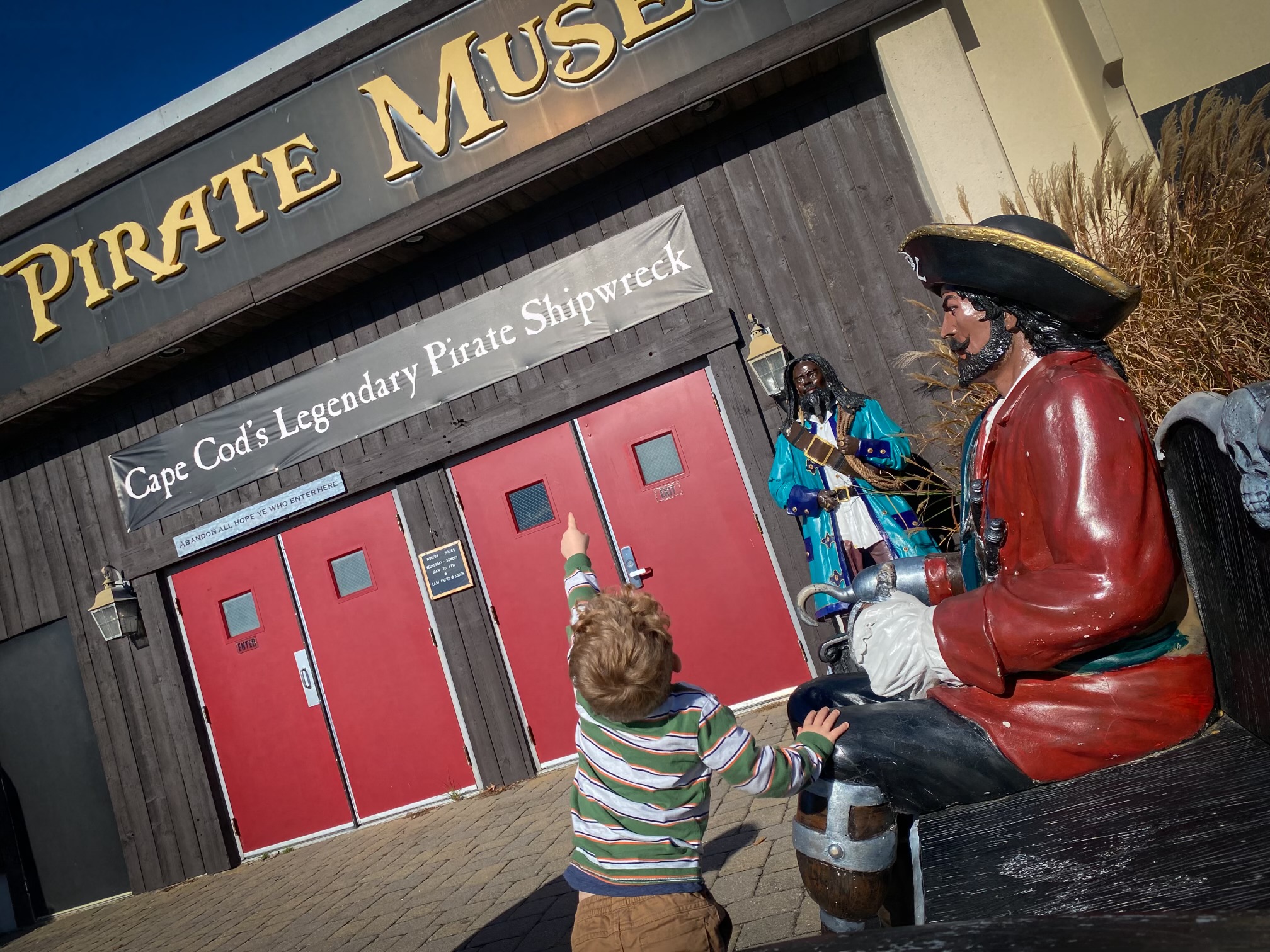While visiting family on the east coast over Thanksgiving, my 3-year-old nephew insisted on visiting the Whydah Pirate Museum, which my sister had found while researching things to do in Cape Cod. I assumed this trip would be a normal visit to a children’s museum, so I was excited to watch my Jake the pirate fanatic nephew’s reaction to all the swash buckling and sword fighting fun a toddler could handle. Little did I know, I would be the one having to be dragged out kicking and screaming because I didn’t want to leave.

My nephew waiting to enter the museum
Although The Whydah Pirate Museum certainly provides well-crafted pirate displays aiming to captivate young imaginations, I was fascinated to find out that the museum also exhibits artifacts from the only confirmed pirate shipwreck ever found. The museum’s namesake, the Whydah, was built in 1715 as a British passenger, cargo, and slave ship. Upon the return of its maiden voyage, the ship was captured by pirate captain Samuel “Black Sam” Bellamy. I recognized the captain’s name immediately. The Lost Pirate Kingdom, a fictional Netflix series I had watched a few years ago, features Sam Bellamy as a character. I can shamelessly say that I was “hooked.”

Reimagined Caribbean Pirate Port, photo courtesy of the Whydah Pirate Museum
My nephew eagerly led us through the beginning of the exhibit, which featured a replica of the Whydah, complete with captain Sam Bellamy’s chambers. We discovered that the ship was wrecked and sunk by a nor’easter off the New England coast in 1717, killing all but two of its crew. This fate was also portrayed in the Netflix series, although a lot more of the crew survived to further the plot in the show. While I always enjoy an expertly replicated historical scene, which you can find at most history museums, the second half of the exhibit was what really “looted” my heart.

Replica of The Whydam, photo courtesy of the Whydah Pirate Museum
What I found most intriguing was the scientific portion of the exhibit. The Whydah was discovered in 1984 and became the only pirate shipwreck to be authenticated beyond a doubt. The identification was made possible by the discovery of the ship’s bell inscribed with “The Whydah Gally 1716.” As I walked into the next room, I expected to be greeted by more pirate ship and peg leg models, but I was surprised to find what looked like rocks from the sea floor being showered by a steady supply of water. I learned these coral-like rocks are called concretions. According to the exhibition didactics, a concretion occurs when metal submerged in seawater undergoes an electrolytic reaction that combines the metal, salt, and sandy clay present on the sea floor to create a relatively stable solid mass. The museum displays X-rays and CT scans of the concretions above the actual masses, so the viewer can see what metal treasures are hidden inside. It’s crazy what can take place when human innovation and mother nature come “aye to aye.”
I guess you never know what you “arrrrrr” about to learn at a museum!

A concreation on display at the Museum, photo courtesy of the Whydah Pirate Museum. These Solid masses must be showered with water to prevent disintegration.




